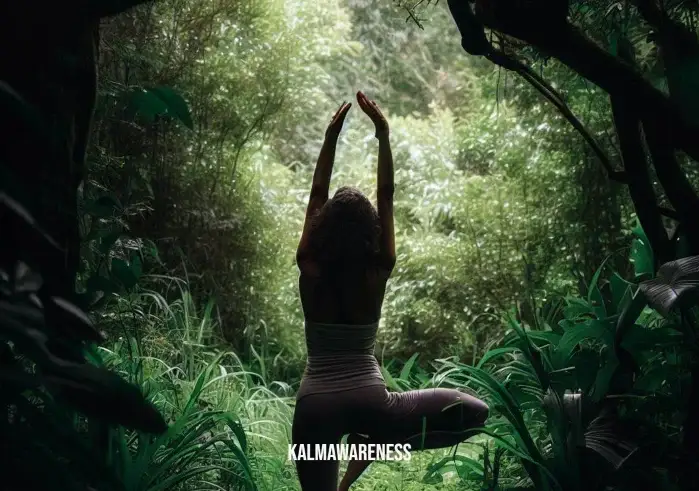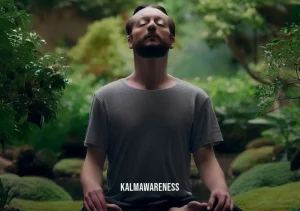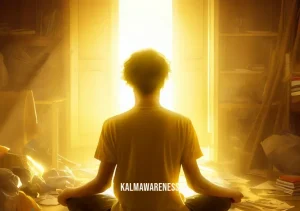The Captivating Crescent Moon Pose
In this article, we’ll explore the mesmerizing world of Yoga Poses, with a special focus on the enchanting Yoga Crescent Moon Pose. Unleash your inner creativity and burstiness as we dive into the soothing realm of yoga and its various categories found on our website. Throughout this journey, we’ll make use of different types of syntax, including headings (h2 to h4), lists (ul, ol, li), emphasized text (em), and blockquotes to create an engaging and informative experience.
Table: Yoga Crescent Moon Pose
| Description | Explanation |
|---|---|
| Pose Name | Yoga Crescent Moon Pose |
| Original Name | Chandra Yantrasana |
| Difficulty Level | Intermediate |
| Pose Category | Standing Yoga Pose |
| Exercise Duration | For Beginners: 30 seconds – 1 minute<br>For Advanced: 1 – 2 minutes |
Introduction to Yoga Poses
Before we delve into the captivating Yoga Crescent Moon Pose, let’s take a moment to appreciate the beauty and benefits of practicing yoga poses. Yoga, an ancient practice originating from India, encompasses various postures that promote physical, mental, and spiritual well-being. Each pose has its unique charm, offering a sense of tranquility and strength to those who embrace them.
Within our website’s Yoga cluster, we have a vast collection of yoga poses, and today, we’ll shine a spotlight on the magnificent Crescent Moon Pose.
Yoga Crescent Moon Pose: Embracing the Lunar Energy
The Yoga Crescent Moon Pose, also known as Chandra Yantrasana, draws inspiration from the celestial beauty of the moon. This standing yoga pose gracefully mimics the shape of a crescent moon, invoking a sense of connection with the lunar energy.
Step by Step Guide
- Starting Position: Stand tall at the top of your yoga mat, feet hip-width apart, and arms relaxed at your sides.
- Inhale and Extend: As you inhale deeply, raise your arms overhead, interlocking your fingers, and flipping your palms to face upwards. Engage your core muscles gently.
- Side Stretch: While keeping your arms extended, lean your upper body to the right, creating a gentle stretch along the left side of your torso. Feel the elongation from your left hip to your left fingertips.
- Hold the Pose: Maintain the stretch for a few breaths, breathing deeply and mindfully.
- Return to Center: Inhale and bring your torso back to the center, with your arms still extended overhead.
- Switch Sides: Exhale and repeat the side stretch, this time leaning to the left side, while stretching the right side of your body.
- Hold and Breathe: Stay in this position for a few breaths, allowing your body to open up and embrace the stretch.
- Release: Gently release the pose by lowering your arms back to your sides as you exhale.
Note: If you’re new to this pose, take it slowly and listen to your body. As you advance in your practice, you can gradually extend the duration of the pose.

Yoga Crescent Moon Pose – Embracing Lunar Serenity
In the previous part of our yoga journey, we explored the captivating Yoga Crescent Moon Pose, also known as Chandra Yantrasana. Now, let’s delve deeper into this graceful pose and uncover its numerous benefits, variations suitable for different experience levels, and considerations for practitioners who may find this pose challenging.
Benefits of Yoga Crescent Moon Pose
As with many yoga poses, the Yoga Crescent Moon Pose offers a plethora of physical, mental, and emotional benefits. Let’s shine a light on some of the key advantages of incorporating this pose into your practice:
- Spinal Flexibility: The lateral stretch in this pose helps increase the flexibility of your spine, promoting better posture and reducing tension in the back.
- Hip Opening: The stretching of the sides of your torso gently opens up your hips, enhancing mobility and relieving tightness.
- Stress Relief: The elongated stretches and focused breathing promote relaxation, calming the mind and reducing stress and anxiety.
- Balance and Focus: This pose requires concentration and balance, enhancing your mental focus and mind-body connection.
- Moon Energy: Embracing the shape of the crescent moon allows you to tap into the calming and feminine energy associated with the moon.
- Improved Circulation: The extension and stretching of the body enhance blood circulation, providing fresh oxygen to your cells.
- Mindful Breathing: Practicing Chandra Yantrasana encourages conscious breathing, promoting mindfulness and self-awareness.
- Inner Strength: As you hold the pose, you build both physical and mental strength, fostering resilience and determination.
Modifications for Different Levels
The Yoga Crescent Moon Pose can be adapted to suit practitioners of varying experience levels. Whether you’re a beginner or an advanced yogi, here are some modifications to explore:
1. Beginner Variation:
For those new to yoga or still developing their flexibility, consider the following modifications:
- Use a Chair: Stand beside a sturdy chair and perform the side stretch while holding the backrest for support. This ensures stability and prevents strain.
- Reduced Stretch: Take the stretch only as far as your body allows comfortably, without pushing yourself to the maximum limit.
2. Advanced Variation:
For experienced practitioners seeking a deeper challenge, try these variations:
- Extended Hold: Increase the duration of the pose, holding it for 2 minutes or more, to intensify the benefits and enhance focus.
- Crescent Moon Flow: Flow dynamically between the right and left side stretches, moving with your breath for a more dynamic practice.
Precautions and Contraindications
While the Yoga Crescent Moon Pose offers numerous benefits, it may not be suitable for everyone. Here are some considerations and contraindications:
- Avoid During Pregnancy: Pregnant individuals, especially those in the second and third trimesters, should avoid deep side stretches like this pose.
- Injury or Chronic Conditions: If you have a shoulder, hip, or back injury, or any chronic health condition, consult your healthcare provider before attempting this pose.
- High Blood Pressure: Those with high blood pressure should be cautious, as this pose involves an inversion and may impact blood pressure levels.
- Neck Issues: Individuals with neck issues or cervical spine problems should refrain from looking upward during the stretch to avoid strain.
Who Should Not Practice Yoga Crescent Moon Pose
This pose may not be suitable for individuals with the following conditions:
- Vertigo or Dizziness: The side stretch and looking upward may exacerbate feelings of vertigo or dizziness.
- Recent Surgery: If you have undergone recent surgery, avoid this pose until you receive clearance from your healthcare provider.
Continue the Serene Journey
Congratulations on exploring the myriad benefits and variations of the Yoga Crescent Moon Pose! In the next part of our article, we’ll delve into the fascinating world of yoga clusters and explore how you can seamlessly integrate this pose into your existing yoga practice. Embrace the lunar serenity and continue your journey with us!

Yoga Clusters – Embracing Unity and Diversity
In our journey through the captivating world of yoga, we have embraced the serene Yoga Crescent Moon Pose, connecting with the lunar energy and exploring its benefits and variations. Now, let’s dive into the fascinating concept of Yoga Clusters, an integral part of the yoga experience, and discover how these clusters unite diverse poses and themes to create a harmonious and holistic practice.
Understanding Yoga Clusters
A Yoga Cluster is a collection of yoga poses and themes that complement each other, creating a cohesive and transformative practice. These clusters are designed to enhance specific aspects of physical, mental, and spiritual well-being, catering to the diverse needs and preferences of practitioners. From strength-building clusters to relaxation-focused ones, each cluster offers a unique journey of self-discovery.
The Beauty of Unity
Within the vast expanse of yoga, unity plays a vital role in cultivating a sense of oneness with oneself and the universe. Yoga Clusters embrace this concept of unity, seamlessly blending poses and practices that flow harmoniously together. As we transition from the Yoga Crescent Moon Pose, we can integrate it into a cluster that emphasizes lateral stretches, balance, and mindfulness.
Embracing Diversity
Just as each individual possesses unique qualities, so do yoga poses. Yoga Clusters embrace this diversity, allowing practitioners to explore a myriad of poses and themes. As we progress through our yoga practice, we may encounter clusters that focus on hip opening, heart-opening backbends, inversions, and more. The beauty of diversity lies in the opportunity to explore different facets of ourselves and our practice.
Creating Your Own Yoga Cluster
While pre-designed yoga clusters offer an enriching experience, creating your personalized cluster adds a touch of individuality to your practice. Here’s how you can curate your unique yoga journey:
1. Identify Your Focus:
Determine the specific aspect you wish to explore or enhance in your practice. It could be strength, flexibility, relaxation, or even a spiritual theme.
2. Select Complementary Poses:
Choose yoga poses that align with your chosen focus. For example, if you want to work on balance, include poses like Tree Pose and Half Moon Pose in your cluster.
3. Mindful Transitions:
Ensure smooth and mindful transitions between poses. Allow your breath to guide you, creating a seamless flow of movement.
4. Set an Intention:
Infuse your cluster with an intention or affirmation that resonates with your practice. This sets the tone for your yoga journey.
5. Listen to Your Body:
As with any yoga practice, listen to your body’s signals and modify the cluster to suit your needs and capabilities.
Embrace the Journey
As we venture further into the world of yoga clusters, we invite you to embrace the unity and diversity that this practice offers. Let the concept of unity guide you in creating a harmonious cluster that complements your practice, and welcome the diversity of poses that enrich your yoga journey.
In the next part of our article, we’ll explore the concept of Yoga for Mindfulness, delving into practices that cultivate a deeper sense of awareness and presence. Embark on this mindful journey with us as we continue to expand our yoga horizons.
@
The History of Yoga Crescent Moon Pose: Embracing Ancient Wisdom
In our enchanting journey through the world of yoga, we have explored the serene Yoga Crescent Moon Pose, integrated it into yoga clusters, and ventured into the realm of mindfulness. Now, let’s embark on a voyage through time as we uncover the rich history of this graceful pose, delving into its spiritual significance, and learn how to get the most out of our practice.
Tracing the Origins
The Yoga Crescent Moon Pose, or Chandra Yantrasana, draws its roots from the ancient practice of yoga that originated in India over 5,000 years ago. While the exact date of its inception remains shrouded in the mists of time, the essence of this pose is deeply ingrained in the spiritual and philosophical teachings of yoga.
A Celestial Connection
In yoga, the moon symbolizes femininity, intuition, and receptivity. The crescent moon, with its gentle glow, represents transformation and growth, much like the journey we undertake through our yoga practice. By emulating the crescent moon’s shape in this pose, practitioners embrace the soothing and calming energy of the moon.
The Spiritual Significance
Beyond its physical benefits, the Yoga Crescent Moon Pose holds spiritual significance, inviting practitioners to explore the connection between their inner selves and the universe. As you stretch gracefully in this pose, allow yourself to tune into the deeper layers of your being, experiencing a profound sense of self-awareness and spiritual growth.
Tips for Enhanced Practice
To make the most of your Yoga Crescent Moon Pose experience, consider the following tips:
- Mindful Breath: Throughout the pose, focus on steady and mindful breathing, allowing the breath to guide your movements.
- Soft Gaze: Maintain a soft gaze during the side stretches, avoiding strain on the neck and promoting relaxation.
- Engage Core Muscles: Keep your core lightly engaged to support your torso and enhance stability in the pose.
- Explore Transitions: Experiment with flowing between the right and left side stretches, gracefully transitioning with each breath.
Common Mistakes to Avoid
As with any yoga pose, certain mistakes may hinder your practice. Avoid the following common pitfalls:
- Overarching the Back: Keep your spine lengthened and avoid excessive arching of the lower back.
- Tension in the Shoulders: Relax your shoulders and let them gently slide away from your ears.
- Forcing the Stretch: Remember to take the side stretches only as far as your body allows comfortably. Avoid pushing yourself too hard.
Modifications for Individual Needs
Every practitioner’s journey is unique, and modifications can enhance the Yoga Crescent Moon Pose experience. Consider the following adjustments:
- Injuries: If you have shoulder, hip, or back injuries, reduce the depth of the stretch or use props for support.
- Limited Flexibility: If your flexibility is limited, place your hand on your hip instead of reaching overhead during the side stretch.
Complementary Poses
To further enrich your practice and complement the Yoga Crescent Moon Pose, consider incorporating the following poses:
- Warrior II (Virabhadrasana II): This standing pose enhances strength and balance while opening up the hips and chest.
- Tree Pose (Vrikshasana): A balancing pose that cultivates focus and stability while stretching the legs and improving posture.
Embrace the Timeless Wisdom
As we explore the history and spiritual significance of the Yoga Crescent Moon Pose, we embrace the timeless wisdom passed down through generations. Let the celestial connection and spiritual essence of this pose infuse your practice with depth and meaning.
In the final part of our article, we’ll bid farewell to the Yoga Crescent Moon Pose, but not without delving into a variety of fascinating yoga poses and clusters that await your exploration. Prepare to be captivated by the rich tapestry of yoga, where unity, diversity, and self-discovery merge harmoniously.





